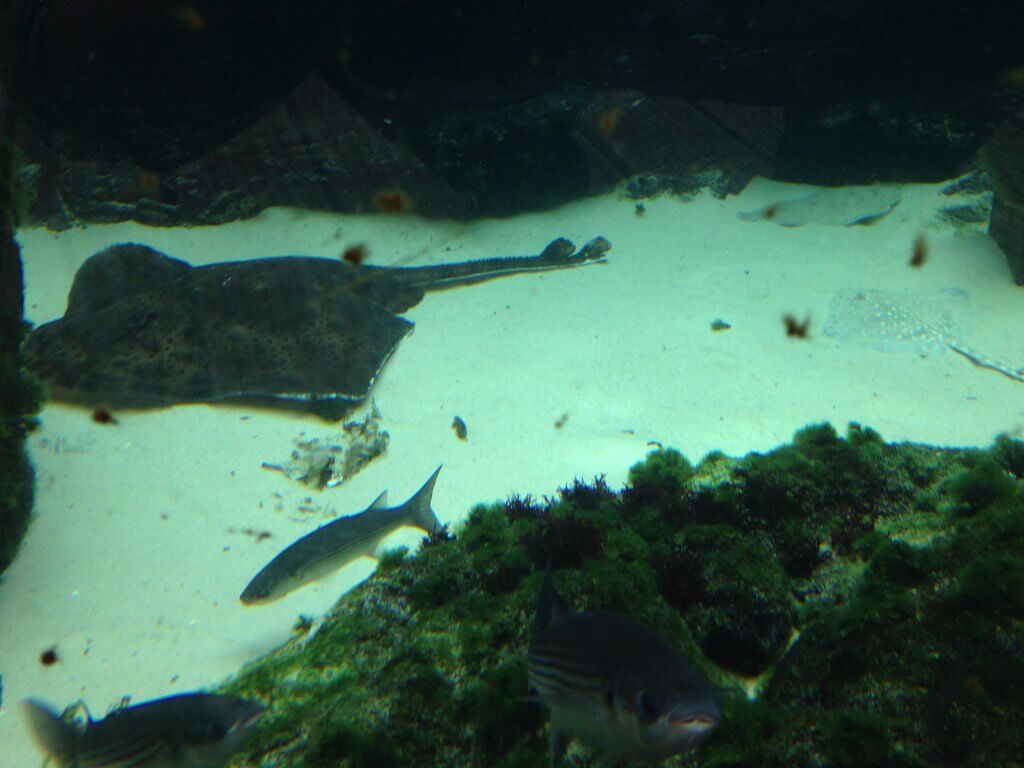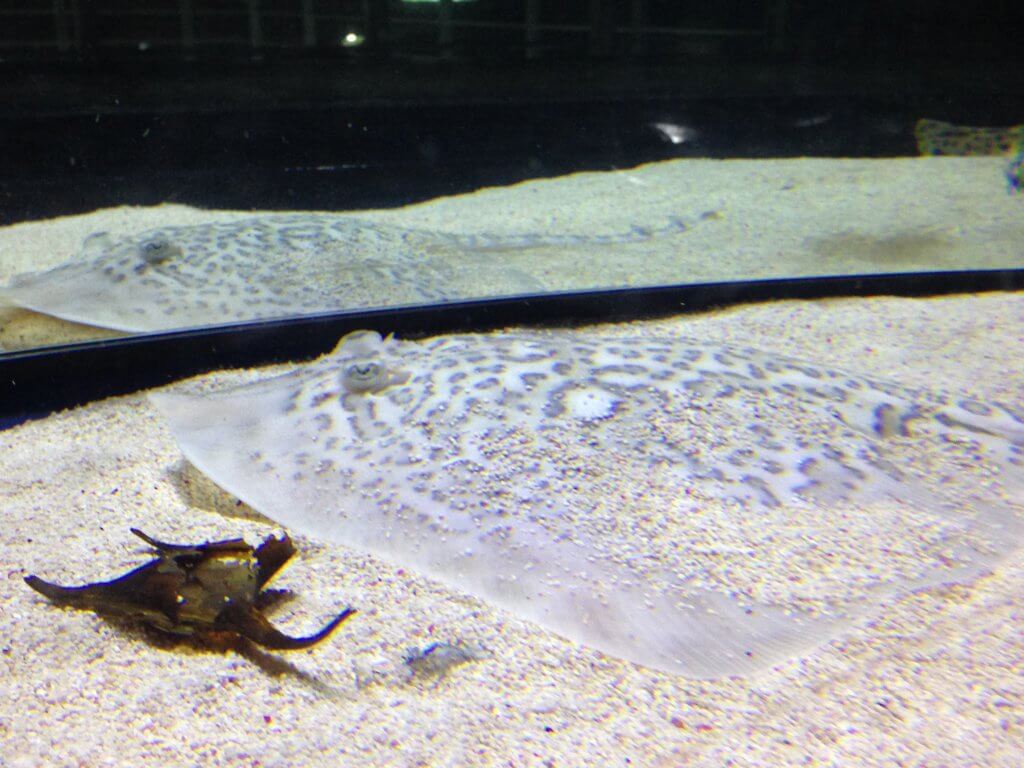Three thornback rays (Raja clavata) have outgrown their nursery tank and have just been introduced into the aquarium’s Bay of Rays exhibit.
The young rays are around 16months and whilst they have outgrown their nursery tank they are still very small in comparison to the fully grown rays in the display.

Olivia Orchart, Zoological Manager at Bristol Aquarium said: “They love the sand on the bottom of the display bed. You have to look closely for them as they are often buried, the give away is that they keep forgetting to bury their tail!”
Bristol Aquarium also has three more thornback rays in the nursery tank to add to the display this summer, once they are big enough. The fever of rays should be fully grown in around five years time and each one can grow up to 1.2metres long.

The name thornback comes from the sharp spines that they have over their back and down their tail. Mature females also have them on the underside of their body.
These rays are found in the coastal waters of UK and Europe including the Bristol Channel. Studies from the Bristol Channel have shown that along with the dogfish (Scyliorhinus canicula) this is one of the most important elasmobranch species with regards to the local ecology.
Thornback rays are classified as Near Threatened. This is possibly due to the fact that they live in localised populations that are subjected to heavy fishing pressure.
Bristol Aquarium is open daily from 10am and children under three go free. For more information about our Bay of Rays please click here or call the Aquarium team on 0117 929 8929.
